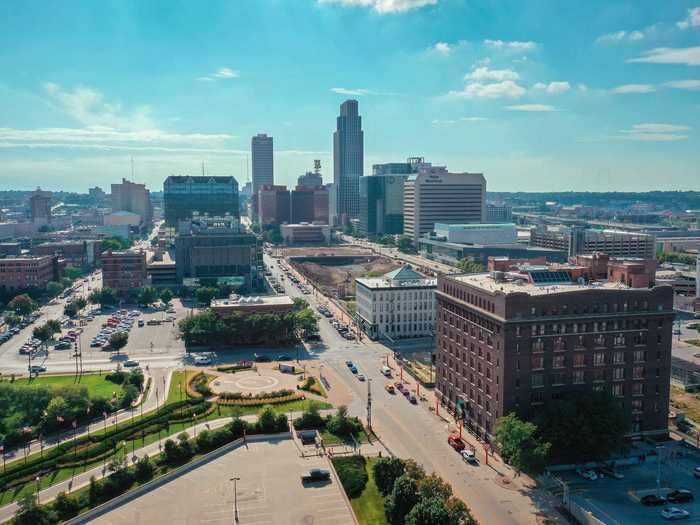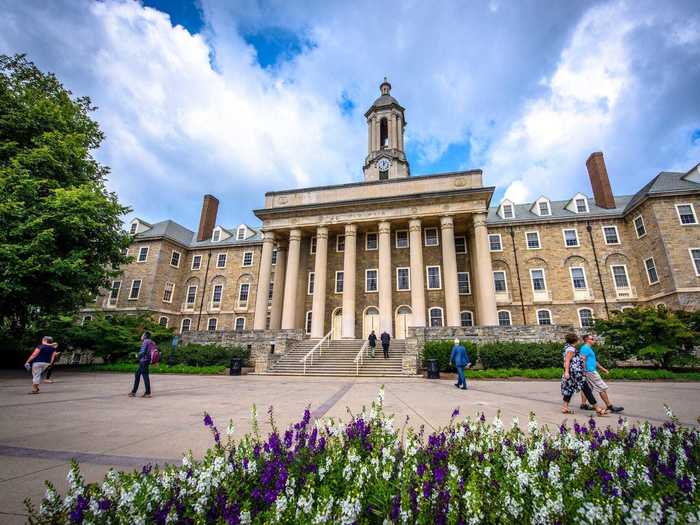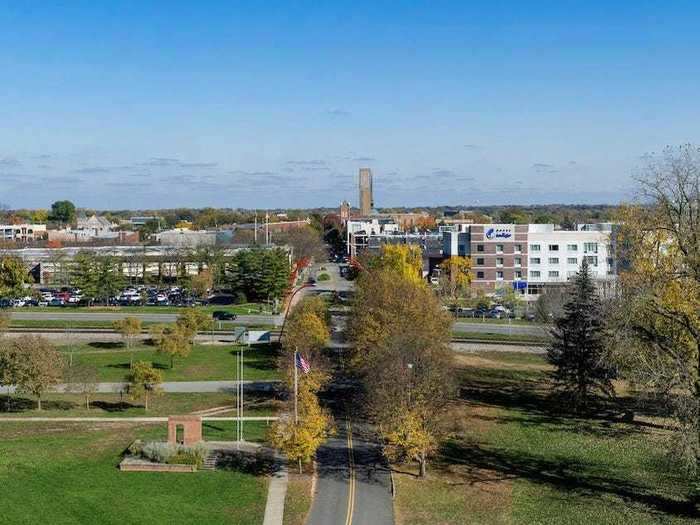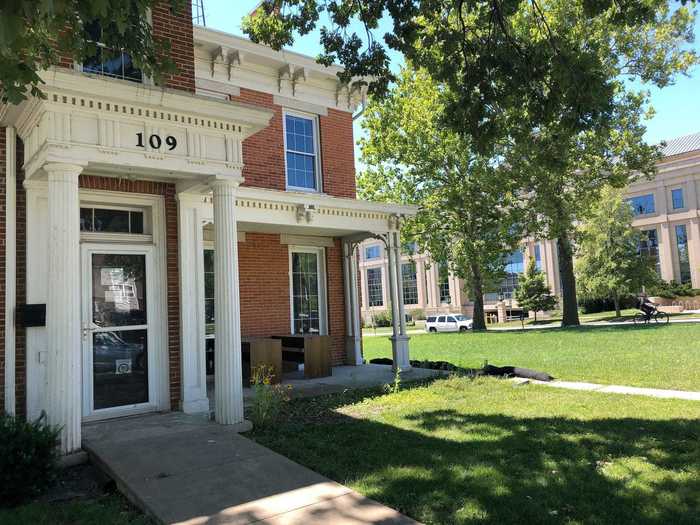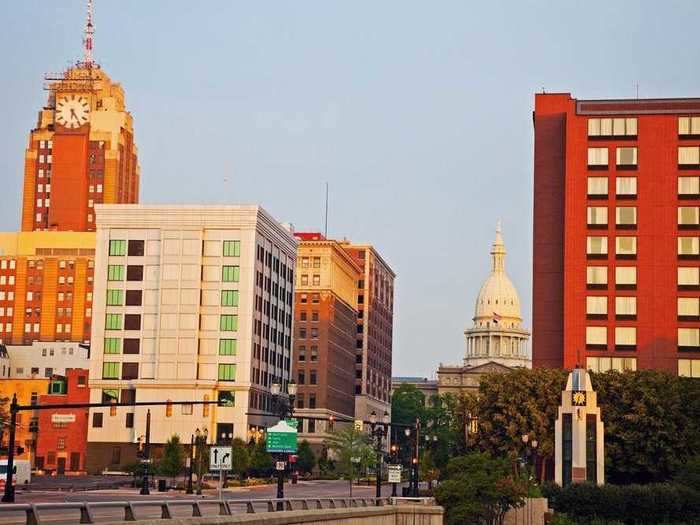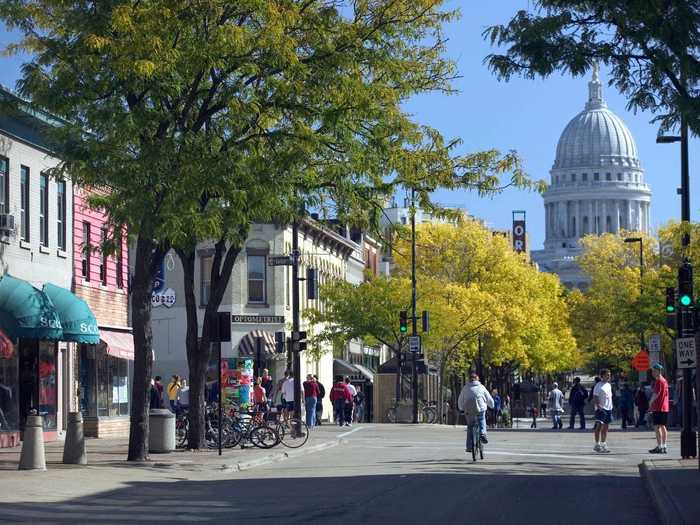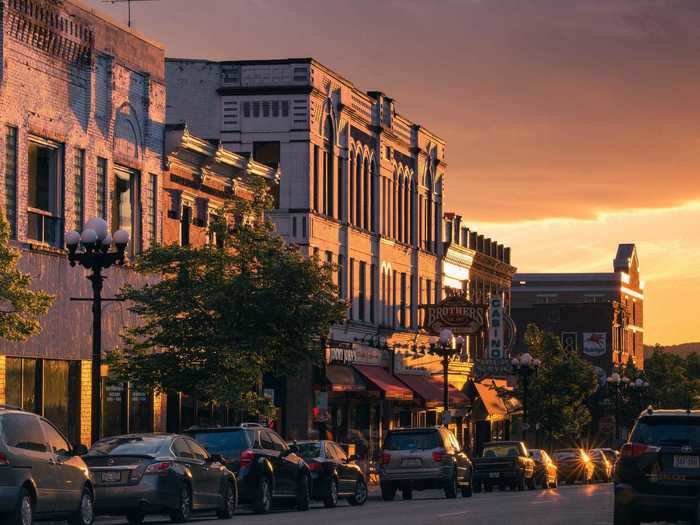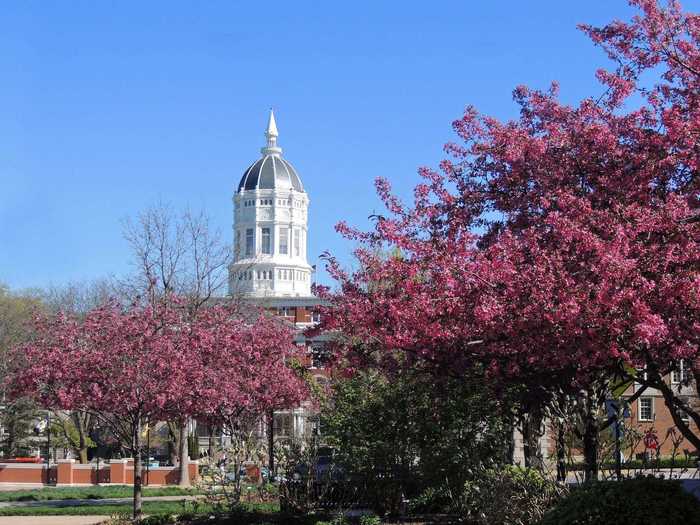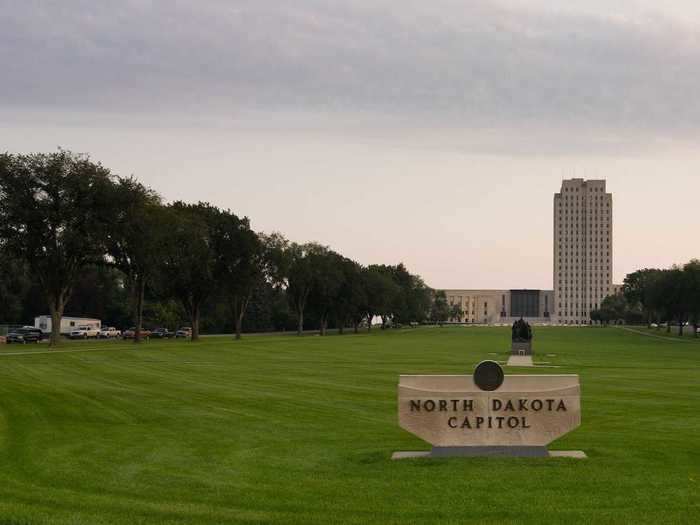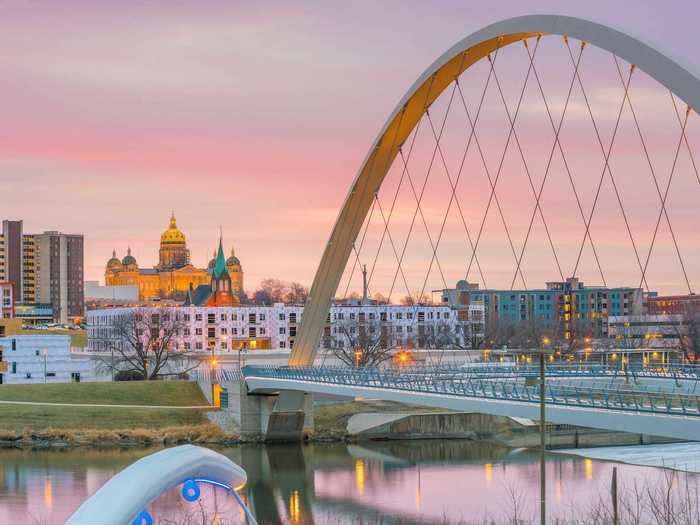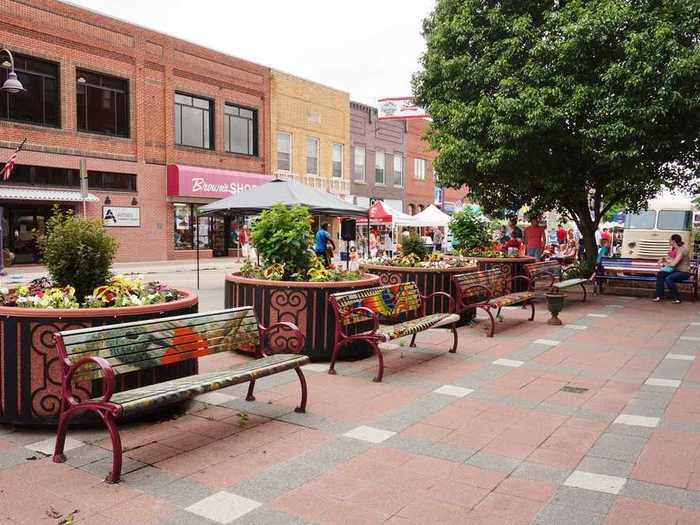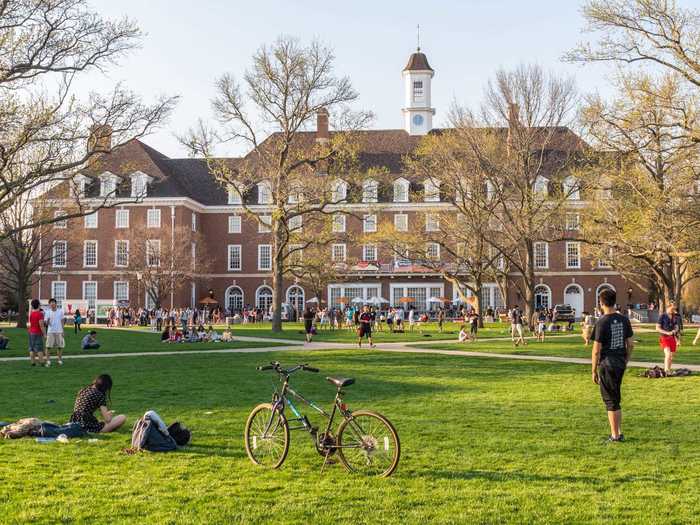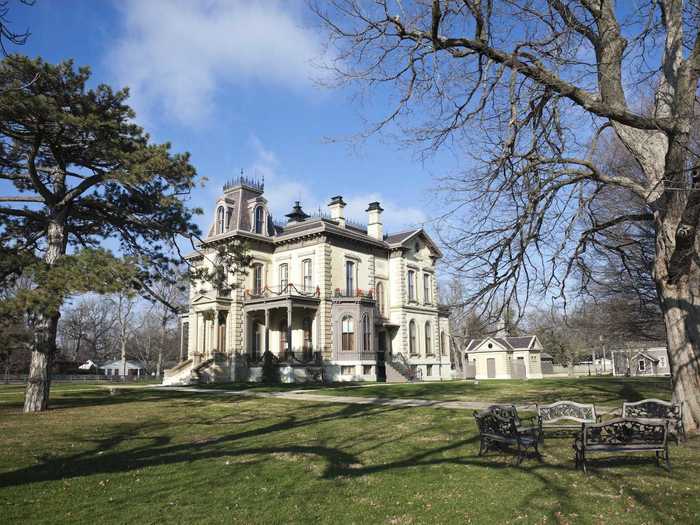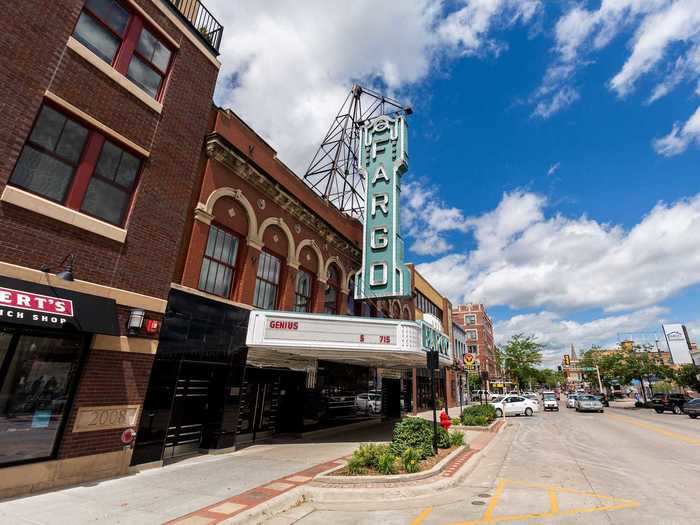Des Moines, Iowa, is one of the best cities for millennials to move to next after the pandemic.f11photo/Shutterstock
- Millenials have recently been moving to places in the South and West region of the US.
- We took a look at where this generation should move to next.
- Business Insider recently ranked the best cities to move to post-pandemic based on various metrics, including economic and housing ones, for each metro area.
- We then looked at which of these metro areas have a larger share of millennials than the average from all metro areas.
- Based on our list, cities throughout the Midwest, like those in Illinois and Iowa, are great cities for millennials to move to after the pandemic.
If you are a millennial looking to live in cities populated with other people in your generation, the following cities are some great places to move to after the coronavirus.
Business Insider came up with the best cities to move to after the pandemic using nine different metrics, such as average weekly commute, ability to work from home, and housing affordability.
You can learn more about our methods and data sets used to create the overall city ranking here.
A recent city migration ranking from SmartAsset found millenials were moving to Southern and Western cities before the pandemic.
We wanted to figure out which cities would be best for millennials to move to based on our overall list. To do this, we looked at the share of millennials in each metro area using data from the Census Bureau's American Community Survey in 2018. Because the government agency reports the data by age brackets, we took the shares in ages 20-39 because they are closest to Pew Research Center's cut off point for millennials. We then filtered out from our main list the cities that had at least 26.9% of residents in this age cohort, the average share across all metro areas used in our overall ranking.
As with our overall national ranking, many of the best cities for younger Americans are located in the Midwest. Fargo, North Dakota, took on the top spot, with 34.6% of residents falling in our target age bracket. The city also offers a relatively high share of jobs that can be done from home, high share of educational attainment, and short weekly commute.
It is important to note that our ranking was created using data prior to the pandemic. The economic crisis as a result of the coronavirus may change conditions in a city. For instance, State College, Pennsylvania, was the 16th-best city for millennials to move to. This metro area has a high share of people age 25 and over who have at least a bachelor's degree, one of the metrics Moody's Analytics found that will help a city quickly bounce back from this pandemic. However, this city may have also been negatively impacted by the closure of college campuses these past few months.
Read on to find out the 17 best cities for millennials to move to.
17. Omaha, Nebraska
Getty Images/Matt Bills
Share of people age 20-39: 28.2%
About 38.9% of jobs can be done from home in Omaha, the 13th-highest share among metro areas in the Midwest and a higher share than most metro areas. This metro area's cost of living is 7.9% less than the US' cost of living.
16. State College, Pennsylvania
Kristopher Kettner/Shutterstock
Share of people age 20-39: 35.6%
State College was one of the two metro areas in the Northeast region of the US that made the top of our list for millennials. The cost of living in this metro area is close to that of the national average. The school district with the most students enrolled in this metro area also had the 16th-highest total spending per pupil in elementary and secondary public schools of all metro areas, at $18,328 per pupil.
15. Columbus, Indiana
Nagel Photography/Shutterstock
Share of people age 20-39: 28.3%
Columbus' cost of living is 11.1% lower than the US' cost of living. The metro area also has one of the higher housing affordability scores, where about 79.5% of households spend less than 30% of their income on housing. However, only about 26.3% of jobs can be done from home in this metro area.
14. Iowa City, Iowa
Ryan J. Foley/AP
Share of people age 20-39: 36.4%
Before the pandemic's negative impact on the economy, Iowa City had an unemployment rate of 2.2%, tied for the sixth lowest rate. This metro area also had the 10th-highest share of people who are at least 25 years old with at least a bachelor's degree, at 49.3%.
13. Lansing, Michigan
Henryk Sadura/Shutterstock
Share of people age 20-39: 30.0%
Lansing's cost of living is 8.8% lower than the US' cost of living. Lansing's school district with the most students enrolled had the 19th-highest total spending per pupil in elementary and secondary public schools in the Midwest, at $14,255 per pupil.
12. Ithaca, New York
Matt Champlin/Getty Images
Share of people age 20-39: 35.4%
Ithaca was one of the two metro areas in the Northeast that made the 17 best places for millennials to move to. That's due to a high share of jobs that can be done from home, at 41.6%, and a high share of people who are at least 25 years old and have high educational attainment, at 51.9%. However, this metro area's cost of living is 5.9% greater than the US' cost of living.
11. Madison, Wisconsin
Walter Bibikow/Getty Images
Share of people age 20-39: 31.0%
This metro area in the Midwest has a high share of residents who are at least 25 years old who have at least a bachelor's degree, at 45.7%. If you are looking to continue working remotely after offices reopen, about 42.6% of jobs could be done from home in Madison, a higher share than most metro areas.
10. Logan, Utah
Robert_Ford/Getty Images
Share of people age 20-39: 33.0%
Logan's average weekly commute is two hours and 57 minutes, tied for the 16th shortest among all US metro areas. This metro area in the West also has a low population density, at 77.8 people per square mile. The metro also tied for the second-lowest unemployment rate before the coronavirus at 2.0%.
9. Lincoln, Nebraska
John Coletti/Getty Images
Share of people age 20-39: 31.4%
About 39.1% of jobs could be done in this metro area, the 12th-highest share among metro areas in the Midwest. This city also had one of the highest share of people who are at least 25 years old who have at least a bachelor's degree in this region of the US, at 40.6%. Additionally, Lincoln's cost of living is 8.9% lower than the US' cost of living.
8. La Crosse, Wisconsin
Jason_Ray_Photography/Getty Images
Share of people age 20-39: 28.6%
In La Crosse, 73.7% of households spend less than 30% of their income on housing, which is higher than the share of most metro areas. It has the seventh-shortest average weekly commute in the Midwest, at two hours and 56 minutes. The school district with the most students enrolled in this metro area has one of the higher total spending levels per pupil in elementary and secondary public schools among all metro areas, at $14,413 per pupil.
7. Columbia, Missouri
Nina B/Shutterstock
Share of people age 20-39: 35.4%
This Midwest metro area has a large share of people who are at least 25 years old with high educational attainment at 48.4%. Among metro areas in the Midwest, Columbia has the ninth-shortest commute at two hours and 58 minutes. Columbia's cost of living is also 10.7% lower than the US' cost of living.
6. Bismarck, North Dakota
Real Window Creative/Shutterstock
Share of people age 20-39: 28.1%
Bismarck is great if you are looking to move out of crowded cities because the metro area has a population density of 30.1 people per square mile, the 15th-lowest population density among all US metro areas. Before the coronavirus, this metro area had a low unemployment rate of 2.4%.
5. Des Moines, Iowa
Des Moines, Iowa, is one of the best cities for millennials to move to next after the pandemic.
f11photo/Shutterstock
Share of people age 20-39: 28.1%
If you are looking to continue working remotely after the pandemic, about 42.7% of jobs can be done from home in this metro area, the 17th-highest share among all US metro areas. Des Moines has one of the highest housing affordability scores in the Midwest, where about 74.2% of households spend less than 30% of their income on housing.
4. Ames, Iowa
EQRoy/Shutterstock
Share of people age 20-39: 40.7%
This Midwestern city's cost of living is 8.5% lower than the US' cost of living. Ames also had the ninth-highest share of residents who are at least 25 years old and have a high educational attainment at 50.7%. Before the economic effects of the pandemic, this city tied for the second-lowest unemployment rate at 2.0%.
3. Champaign, Illinois
leightrail/Getty Images
Share of people age 20-39: 34.0%
The school district with the most students enrolled in Champaign had the 20th-highest total spending per pupil in elementary and secondary public schools of all metro areas, at $17,606 per pupil. This Midwest metro area also is among the metro areas in the region with the highest share of jobs that could be done from home at 38.2%. Champaign's cost of living is also 7.8% less than the US'.
2. Bloomington, Illinois
Henryk Sadura/Shutterstock
Share of people age 20-39: 30.9%
Bloomington ranked as the fourth best city in our overall list, and before the pandemic had a pre-coronavirus unemployment rate of 3.2%, close to the national average in February. If you are considering continuing to work from home after offices reopen, about 39.4% of jobs in Fargo can be done from home.
1. Fargo, North Dakota
David Harmantas/Shutterstock
Share of people age 20-39: 34.6%
Fargo, which ranked third in our overall list, had a weekly commute to and from work of two hours and 52 minutes, tied for the 10th shortest among metro areas. If you are considering continuing to work remotely after offices reopen, about 37.3% of jobs in Fargo can be done from home.

